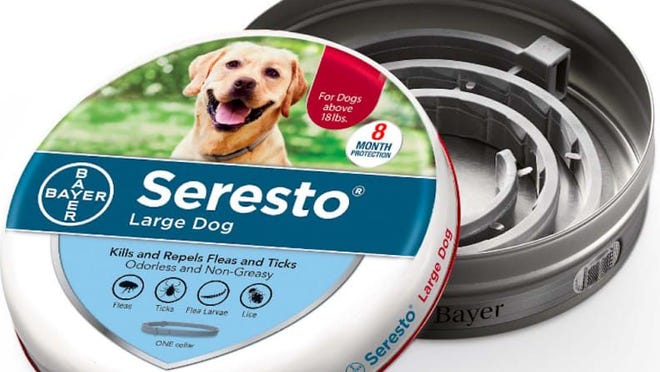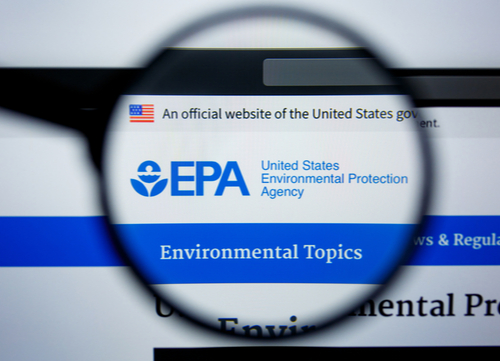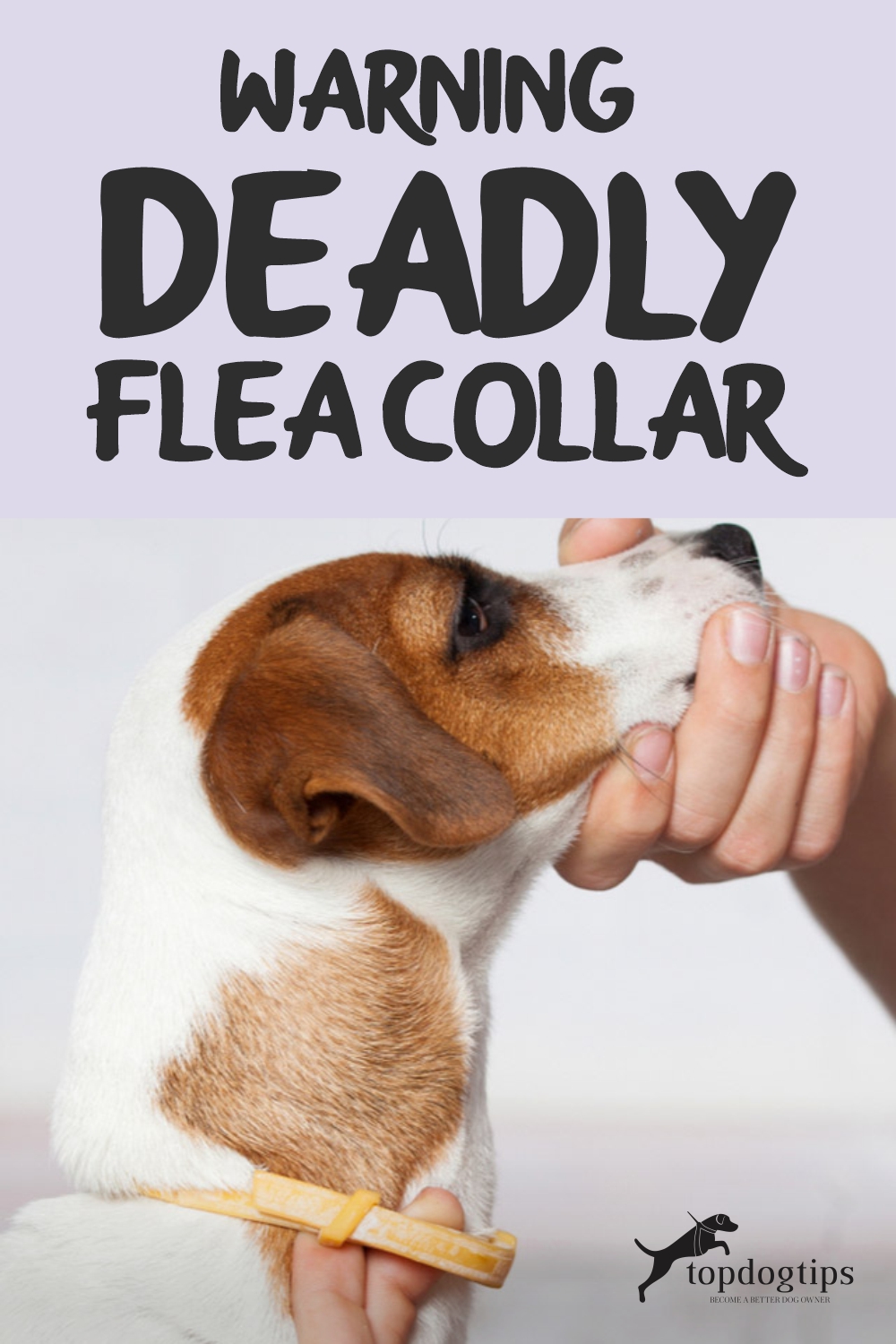
Table of Contents
When her veterinarian approached Rhonda Bomwell about purchasing a flea and tick collar, she took his advice to heart. Pierre was a 9-year-old Papillon service dog and was an indoor animal. She promptly headed to the pet store near her home and purchased a Bayer’s Seresto Collar. She had no idea about this potentially deadly flea collar.
A day later, on June 2, 2020, Bomwell made dinner and noticed her beloved Pierre had had a seizure. He lay on his back, stopped breathing, and his eyes rolled back. Despite CPR’s unsuccessful efforts, police assistance, and emergency admittance to the hospital, Pierre died before receiving medical treatment.

Seresto Collar: Popular Flea Collar Danger Yet The EPA is Remaining Silent
Sitting as one of the most popular flea and tick collars, Seresto has been linked to thousands of injured animals. It holds hundreds of accounts of harmed animals and hundreds of pet deaths. In fact, the proof is found within the U.S. Environmental Protection Agency documentation. Yet, it seems the EPA has done absolutely nothing to warn potential consumers of the identified risks of this deadly flea collar.
Even worse, Bomwell said the worst part of her entire experience is that she feels guilty. She was feeling responsible for using the product on her dog. She believed she had half a decade left to enjoy with her pup.

How do Seresto Flea and Tick Collars Work?
The flea and tick collar was developed by Bayer and is sold under Elanco. The collar works by releasing small amounts of pesticide onto the animal directly for a specified period of time (normally months at a time). The chemical is supposed to be safe for cats and dogs but kills ticks, fleas, and other pests. It has been documented that the collars are fast-acting, preventing ticks from attaching and feeding within six hours of use.
Unfortunately, that doesn’t seem to be entirely factual. The EPA has received reports of at least 1,698 related pet deaths. In fact, there were more than 75,000 incident reports related to the deadly flea collar, with nearly 1,000 involving human harm.
Currently, global data suggests that 1 in 568 users have an incident. While most incident reports relate to non-serious effects, having a product on the market with over 75,000 incidents is virtually unfounded.
On March 16, 2012, the EPA approved the Seresto collars for public use. They are designed to work for eight-month periods at a time. The pesticides used in production are imidacloprid and flumethrin. As of today’s writing, imidacloprid belongs to the neonicotinoid class of insecticides. Flumethrin is currently only an active ingredient in one product globally – the Seresto collars. The products have a “synergistic effect” together. This means it makes them more toxic together on fleas. Donley, who holds a doctorate in cell and developmental biology (and a prior researcher within the cancer realm), suspects that the toxic effect likely extends to pets as well, making this a potentially deadly flea collar.

What is the EPA?
The EPA is a government department known as the United States Environmental Protection Agency. Their mission is to protect human health and the environment. They specifically review chemicals in the marketplace for safety. Complaints about incidents go back several years, yet there has been no warning from the EPA. No warning has been issued about the potential safety hazards of using the products.
According to Karen McCormack, a retired EPA employee, the Seresto brand of flea and tick collars has the highest number of incidents reported. This is true compared to any pesticide pet product currently on the market. The EPA does maintain that they’re monitoring the situation, but it has become increasingly apparent that doesn’t mean safety. Perhaps it’s turning a blind eye over their desire to keep animals safe from a deadly flea collar.
When questioned, the EPA declined to comment on how Seresto compares with other pet products within the same industry. They didn’t comment in terms of symptoms, complaints, or reported issues. Additionally, they did confirm in an emailed statement that two pesticides in Seresto are “eligible for continued registration” based on current science (which includes incident data). A Freedom of Information request has been filed by The Midwest Center but has not been filled at this time.
A spokesperson with the EPA commented, “No pesticide is completely without harm, but the EPA ensures that there are measures on the product label that reduce risk.” Further, “the product label is the law, and applicators must follow label directions. Some pets, however, like some humans, are more sensitive than others and may experience adverse symptoms after treatment.”
Complaints Extend Beyond the EPA into the Online Marketplace
Currently, Seresto is the top-selling collar online. Despite this, it has numerous complaints from customers who have purchased and used the product. Reviews detail distinct complaints, from skin rashes to neurological responses after use. Despite these multiple warnings, the Seresto collar continues to sell in the online marketplace.
Incidents Extend Beyond Pet Interactions
According to EPA documents, incidents extend beyond beloved pets. In fact, between 2013 and 2018, 907 incidents with humans were documented. Of these incidents, 19 were determined to be severe incidents.
Despite tens of thousands of complaints to the EPA, nothing has been done so far about this deadly flea collar. The web draws up dozens of posts from pet owners warning of the product’s use, including countless comments on pet forums. Social media is full of pages and groups begging other pet owners to take notice and remain cautious of Seresto’s products.
Alternative Natural Flea Products
Currently, there are more than 2,000 species of fleas. It’s important to protect your pet against this blood-sucking insect, which is a preventative step against potentially fatal complications. An infestation can quickly spread, especially with fleas (which can survive more than 100 days without a blood meal). If your pet has contracted fleas, you may already have hundreds or thousands of pests living in your home. Any home remedies used will not be effective unless you get rid of fleas in your home.
Rather than risking pesticide-based products like Seresto, natural products can effectively eliminate pests without the potential risks. Here are three methods to get rid of these itchy, invasive pests efficiently:
ACD Homemade Dog Flea Spray
A common product used to kill fleas on dogs, flea spray effectively keeps your animals pest-free. This combination combines natural products to make an efficient product without the use of pesticides. Simply combine 1 part apple cider vinegar with equal part water in a spray bottle. Although this method won’t kill fleas, it can prevent an infestation from occurring. Simply apply the spray every 2-3 days to ensure efficiency.
Essential Oils Flea Spray
Apple cider vinegar has a particularly pungent aroma, which can turn the stomachs of even the toughest nose. To help limit the strong smell, add 5 drops of lavender essential oil and 5 drops of peppermint essential oil to the mixture. It’s important to use the spray every 2-3 days to ensure fleas stay off your dog.
Do-It-Yourself Flea Bath
Although there are many commercially available products for fleas, ticks, and other pests, creating your own flea bath is often just as effective. Dawn dish soap can be used to destroy the exoskeleton of fleas effectively. It also prevents the exoskeleton from floating, forcing adult fleas into the water. Essentially, Dawn dish soap drowns fleas.
After thoroughly washing your dog, rinse him with apple cider vinegar. The apple cider vinegar will help balance the skin’s pH level, making it a harder environment for fleas.

Talk To Your Vet
The tragedy that is Seresto’s flea collar brings the dangers of pesticides to light. It also highlights a pet owner’s diligence required to keep their fur baby safe despite government protocols. Always remain cautious when using commercially available products.
Talk to your vet prior to starting any new flea or tick treatment. Discuss any possible side effects to watch for when using these products. Treating for fleas or ticks, if done safely, is an important part of your dog’s health and well-being. Many over-the-counter products may use different chemicals than veterinary products. Be sure to report any adverse effects of medications to both the vet and the governing agency. Should you purchase any flea, tick, or medication from the internet, always check the validity of your purchase.
Read all flea and tick medications carefully. Ensure that the product purchased is designed for your pet’s weight and size. If not, do not use the product. Never use flea or tick products on young or injured animals. Many pets may react differently to products, so always monitor your pet for a reaction to medications. Although common, many commercial products may contain harmful or dangerous chemicals that could hurt or injure your pet. Keep all chemical-based products away from children or small animals.
Final Thoughts
If your pet has been affected by the Seresto flea and tick collar, consider reporting it to the EPA. It is only through consumer advocacy that change can be had. In the meantime, always check for reviews, comments, or complaints prior to purchasing a pet-related product.
Read Next: Review: Amber Crown Natural Flea and Tick Collars for Dogs













